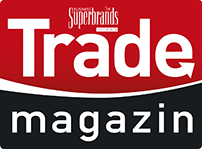Coface: After this year’s weak growth, acceleration may come, but the Hungarian economy is vulnerable
The Hungarian economy may gradually accelerate after this year’s weak performance. After the 0.5 percent expansion expected in 2025, a 2 percent GDP growth can be expected in 2026, according to the latest forecast of the international credit insurer Coface. Hungary’s country risk rating at Coface is currently A4, i.e. “acceptable”. Despite the accelerating economic growth, the Hungarian economy faces numerous challenges and risks. Vulnerability may be a primary concern.
 The Hungarian economy may gradually accelerate after this year’s subdued performance, according to a recent analysis by the international credit insurer Coface. After the expected 0.5 percent annual expansion this year, Hungarian GDP may achieve a growth of around 2 percent in 2026.
The Hungarian economy may gradually accelerate after this year’s subdued performance, according to a recent analysis by the international credit insurer Coface. After the expected 0.5 percent annual expansion this year, Hungarian GDP may achieve a growth of around 2 percent in 2026.
The economic environment is shaped by several mutually reinforcing challenges. The European Commission is withholding around €20 billion in EU funds – equivalent to 9.7 percent of GDP – which is holding back investment. The government has used market and bilateral financing to replenish the funds, but these do not fully replace the non-repayable grants.
Fragile growth model, credit rating risk
Hungary’s current economic weakness reflects its sensitivity to the eurozone business cycle and its dependence on access to EU funds. Over the past decade, growth has been built on expansionary fiscal policy, EU transfers and the depreciation of the forint, which has preserved the competitiveness of exporters. This model has worked in stable periods, but has revealed vulnerabilities in times of external shocks.
The 2022 energy price explosion and inflation shock have highlighted the country’s dependence on external financing and exacerbated fiscal imbalances. The lack of meaningful fiscal consolidation poses a risk to the credit rating and outlook of the Hungarian economy. Coface rates countries based on the economic situation, outlook and business performance; Hungary is currently in the A4 category, i.e. acceptable, but due to its vulnerable structure, the future trajectory largely depends on the development of fiscal policy and the external environment.
Budget, inflation, interest rates
According to Coface’s expectations, the budget deficit could be around 5 percent of GDP in both 2025 and 2026. The 2026 budget envisages a 4 percent increase, while the public debt ratio was 75.3 percent in 2024, one of the highest levels in the Central and Eastern European region. Interest expenditure amounted to 4.9 percent of GDP in 2024, and although lower interest rates on inflation-linked bonds may mitigate this burden, the figure remains high by EU standards.
In response to the record inflation of 25.4 percent in February 2023, the Hungarian National Bank raised the base rate to 13 percent. Inflation fell to 4.3 percent by October 2025, slightly above the central bank’s target range of 3 percent plus/minus 1 percentage point, so the base rate is currently at 6.5 percent. This supports the stability of the forint, but at the same time dampens private investment and domestic demand. According to Coface, the coordination of fiscal and monetary policies is crucial for macroeconomic credibility.
External Dependence and Industrial Investment
In the external environment, Hungary’s strong dependence on German industry and European trade poses a challenge. Exports to Germany account for more than 25 percent of total exports, and the automotive industry accounts for 22 percent of exports, while industrial production has remained below pre-pandemic levels since 2022.
At the same time, the report highlights the rapid inflow of Chinese investment into the Hungarian automotive industry and battery production, including CATL’s €7.3 billion project and developments related to BYD’s European expansion. Since a large part of Chinese direct investment in Europe is related to electromobility, these projects can accelerate Hungary’s technological development, attract strategic suppliers and support the creation of skilled jobs in key industrial regions.
Growth potential and a way out
Coface points out that the previous growth model based on consumption and EU funds is running out of steam, and that a shift towards a path based on productivity and innovation is needed. Labor productivity is around 20 percent below the eurozone average, and domestic private investment is stagnating at 22 percent of GDP, compared to more than 30 percent in neighboring countries.
According to Coface calculations, growth potential could return to around 2.5 percent in the medium term if policies supporting innovation, technical training and the integration of local supply networks are strengthened. Maintaining the current A4 rating and improving it later will be crucial to how well fiscal vulnerability and external dependence are mitigated alongside crisis management measures.
Related news
Hungarian professional leadership also shaped global economic decisions at the historic B20 summit in South Africa
🎧 Hallgasd a cikket: Lejátszás Szünet Folytatás Leállítás Nyelv: Auto…
Read more >The GKI business climate index closed 2025 at a one and a half year high
🎧 Hallgasd a cikket: Lejátszás Szünet Folytatás Leállítás Nyelv: Auto…
Read more >KSH: industrial production decreased by 2.7 percent in October compared to the same period of the previous year, and increased by 0.5 percent compared to the previous month
🎧 Hallgasd a cikket: Lejátszás Szünet Folytatás Leállítás Nyelv: Auto…
Read more >Related news
(HU) Idei győztes sorrend: Grand Automotive East, Tesco Magyarország, Nestlé Hungária
🎧 Hallgasd a cikket: Lejátszás Szünet Folytatás Leállítás Nyelv: Auto…
Read more >Hungarian professional leadership also shaped global economic decisions at the historic B20 summit in South Africa
🎧 Hallgasd a cikket: Lejátszás Szünet Folytatás Leállítás Nyelv: Auto…
Read more >Foodora expands: it brought fast delivery to 21 new cities this year
🎧 Hallgasd a cikket: Lejátszás Szünet Folytatás Leállítás Nyelv: Auto…
Read more >





